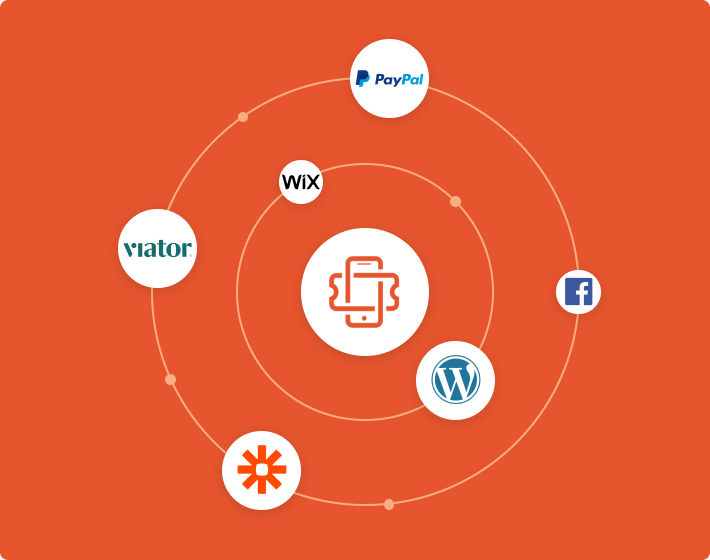Business funding is the act of providing resources, such as time, money, and effort, to finance a company and its projects. It can be a crucial practice, especially if your tour or activity requires substantial upfront costs or if you run into financial trouble.
When talking about business funding, it’s not just about EU programs and government schemes. There are multiple ways to finance your business and some will be better than others, depending on your circumstances.
In this post, we’ll present nine different options for funding your business. This way, we hope you’ll be able to choose the right source of funding for your situation and get a good overview of the alternatives you have.
Ready? Let’s go.
The main sources of business funding
There are several main ways to acquire business funding – whether you’re just starting out or you’ve been in business for a while. These range from traditional bank loans to modern methods like peer-to-peer lending.
1. Pre-sales
The best way to fund your company is usually revenue. With pre-sales, you get all or part of a payment up-front, meaning you can use that revenue to acquire the resources you need to provide your tour or experience.
The most common example of a pre-sale is when customers buy products online. The same goes for booking tours and activities in advance of the delivery date. Effectively, you’re getting the revenue first so you have some time to utilize it.
If you’re just starting out or expanding with a new experience, consider creating some buzz ahead of the launch date. For example, this Harry Potter-themed escape room was fully booked for months ahead long before its official launch date.
It should be noted that pre-sales work best when you need relatively small amounts of cash. For bigger sums, you can turn to other funding sources.
2. Grants
Where pre-sales aren’t enough, grants can help you secure bigger amounts of cash. Grants are essentially money given to you for a specific purpose, such as developing the tourism sector in a given region.
As such, you don’t need to pay the money back (unless you misuse the grant). In most cases, grants are provided by the government or local authority.
Grants may sound too good to be true, so you might ask “where’s the catch”?
To start off, the competition for grants is usually high. This means you will have to provide a better plan and showcase more potential than other companies applying for the same business funding.
In addition, there are often specific requirements in terms of how to spend the funding and what type of businesses can apply. So the supply of grants is limited by their purpose and you can apply only for the ones that you’re eligible for.
Finally, grants often co-finance projects, meaning that you have to provide some part of the funding using other sources.
As the saying goes: “There ain’t no such thing as a free lunch”. To acquire a grant, you will need to put in the time and effort required. This involves researching the right options in your region and preparing great applications that stand out from your competition.
If you’re based in the EU and want to learn more about grants, check out this guide on EU funding for the tourism sector.
3. Buying assets on credit
If you need business funding for buying assets and equipment, then you can arrange for later payment with your suppliers. This will give you extra time to generate revenue and use it to pay for the new purchases.
If you have a good relationship with your suppliers already, you can try and negotiate a favorable time frame, often up to 90 days from the purchase date. However, if you’re just starting out, it might be hard for you to buy assets on credit, especially when dealing with established and reputable suppliers – which you should do.
4. Friends and family
If you’re confident about your business model, you might also turn to friends and family for initial support.
While it could feel uncomfortable, you may find that people are happy to get involved and lend you some money. It’s exciting to back new projects and most importantly – they probably trust you.
Needless to say, adding money to your relationships may add some pressure – so you need to choose the people you approach wisely. It might be a good idea to offer them to partner with you and get a part of the business. But if you’d like to keep full control, you can try and arrange an interest-free loan from someone close to you.
4. Banks
Bank loans are often the first source people think about when it comes to business funding. And yes, they are still a viable option, especially in good economic conditions.
If you’re eligible for a bank loan and you can’t source enough funding using one of the methods above, then turning to banks may be a good next step.
Bank loans are more readily available but come with extra costs like fees and interest. If you’re new in business, it will be hard to get a loan. But if you’ve been trading for a while (normally at least 3 years) and you have good financial metrics, you might get a good deal.
5. Angel investors
If there’s no way to acquire enough business funding using upfront payments, grants, or loans, then you can turn to equity financing through angel investors.
Angel investors can back you with both cash and expertise in exchange for a share in the business. There are both good sides and bad sides to this arrangement.
The good part is that you’re likely to secure the funding you need while getting an experienced business person to advise you.
The bad part is that you’ll need to give up part of your ownership and control over the company. Also, angel investor money might not be enough if you need lots of business funding. In Europe, the typical angel investment will not exceed 50,000€ so you might have to turn to other sources if you require bigger amounts.
6. Venture capital
Venture capital firms make bigger investments – usually at least 500,000€ to 1,000,000€. They are a logical next step if you need considerable business funding and your company is in overall good shape.
The downside is that VCs typically require a substantial part of your business and decision making power. They also look for companies with high-growth potential, meaning that you need a strong selling point to stand a chance of acquiring such funding.
7. Alternative finance
Alternative finance relates to funding methods outside the traditional financial system (e.g. bank loans). They often involve small contributions from multiple investors (sometimes hundreds or thousands) instead of few but large contributions.
For example, approaches like peer-to-peer lending have grown a lot in recent years and there are many platforms that let individuals contribute to businesses through debt financing.
This means you can tap the crowd and get access to a new and growing capital market – and it’s all done online. The platforms which facilitate peer-to-peer lending usually take care of the legal aspects and due diligence.
Depending on where you live, there will be several types of funding you can acquire. If getting a loan or selling shares is not available, then you’ll probably have access to 2 other types of funding: donation and reward-based.
Donation funding is normally applicable to community projects and charities. However, reward-based funding is often a viable option – it lets you create rewards that people receive in the future in exchange for their contributions. Rewards can be things like merchandise or even early bird tickets to your tour or activity.
While not available to everyone, this type of funding can be a great alternative to more traditional methods of financing.
To learn more, you can check out this article with the top European peer-to-peer lending platforms.
8. Side project
In some cases, you can finance your tour or activity through a side venture. This can be totally unrelated or it could be a complementary product/service.
The most famous example of this type of funding is Airbnb. The founders financed their initial idea by selling politically-themed breakfast cereal.
This unusual side venture earned them over $40,000 so they could finance their activities in the early days of Airbnb.
So perhaps there’s something you can easily do on the side that lets you start or expand your business?
9. Joint venture
Another interesting way to get financing is by forming a joint venture with another business.
Joint ventures are partnerships between companies that establish a new entity, often to work on a mutually beneficial project. The idea behind joint ventures is achieving synergy and utilizing each business’ resources better.
So if you have contacts in adjacent industries, you can try and “join forces” to provide a better service together. This way, you can make use of your complementary resources instead of searching for other types of business funding.
Perhaps a potential partner can provide you with premises and you can acquire the rest of the assets? Or maybe you have all the necessary equipment but need working capital?
Whatever the situation, you will often find that partnering with a business from an adjacent industry can be helpful.
Bonus tip: Minimize risk
The business funding methods above can help you acquire the resources you need to start or expand your company. But we should also note what to avoid.
Amassing credit card debt or risking your private property is almost always a bad idea. You should approach business funding with care and ideally consult with a professional whom you know and trust.
Conclusion
While not essential, business funding can be important for starting and growing your tour or activity.
There are multiple ways to acquire business funding, but some options are better than others in the light of your specific situation.
When possible, you should always aim to finance your company with customer revenue.
If that’s not an option, you can turn to sources like grants which you don’t need to pay back.
Buying on credit, bank loans and support from friends and family are other options – if you’re confident you can pay for your purchases later.
If you can’t secure credit for one reason or another, consider offering a share in your company. This can happen through angel investors or venture capital firms if you’re at a later stage.
Finally, consider alternative financing options like peer-to-peer lending or reward-based crowdfunding.
Where that’s not enough, you can create a side business or set up a joint venture with another business to finance your company.
Whichever type of business funding you choose, the crucial thing is to approach the topic with care and make sure you avoid risky moves.
You might also like:
- How to Conduct Market Research for Tour and Activity Companies
- The Top Online Travel Agencies for Selling Tours and Activities
- 10 Ways To Get Free Advertising For Your Tour Or Activity Business
- How to Set Up an Online Store for Your Leisure Business
- The Best Content Management Systems For Tour And Activity Operators





